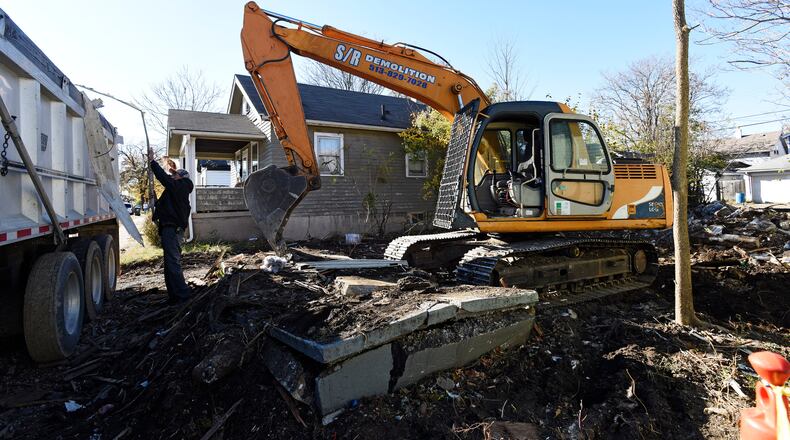“In our estimation without doing a lot of analysis we believe it is due to the value increases,” New Butler County Treasurer Mike McNamara, who chairs the land bank, told the Journal-News.
Former auditor Roger Reynolds fought and lost a fight with the state over an average 20% mandated property value hike in 2020. That failed fight meant tax bills for 2020 and 2021 had to be recalculated for residential and agricultural properties Reynolds challenged in Fairfield, Hamilton and Fairfield and West Chester townships, and the adjustments were on the recent first half tax bills.
It meant 48,999 taxpayers in those areas — where the bulk of the county’s population resides — saw tax bill adjustments totaling $6.1 million.
County Auditor Nancy Nix, who was still the treasurer when taxes were collected this year, agreed with McNamara.
“It’s the retroactive billing and the way it’s processed through the system for past-due taxes,” Nix said. “It created a windfall for the DTAC account. These sort of anomalies occur with DTAC, just the way the system operates.”
When the land bank formed, Butler County commissioners agreed to siphon 1% of delinquent tax and assessment collection funds (DTAC) and open up services for the entire county in 2014. DTAC funds are late payments and penalties on real estate taxes. The county prosecutor and treasurer also each get 2.5% of DTAC and the rest goes back to the various taxing districts.
Executive Director Seth Geisler said the land bank board will need to decide how to spend the “unexpected” funds, but this is the largest one-time amount they have ever received which gives them options, one could be to tackle a bigger project than they normally handle.
“No matter when we decide to use the funds we will continue to support our community partners and our objective will remain the same; to remove blighted properties that will improve the quality and safety of communities, increase land values, return properties to the tax rolls and to support opportunities to develop property that will help spur economic development and create jobs,” Geisler said.
The next installment will likely be less because generally the first half collection of taxes is always more than the second half in the summer. McNamara certified the total first half property tax collection at $327.7 million, the total billed for the entire year is $615 million so there is $288 million left.
“A lot of people opt to pay first and second half because your first half bill has both halves listed on it,” McNamara said previously. “So you have the option pay just first half or first and second half and be done with it.”
Over the past decade, the land bank used $2.6 million in state funding downing nearly 600 bad buildings. Then beginning in 2014 they received $5 million in federal Hardest Hit Funds for the Neighborhood Initiative Program and toppled 409 in the two big cities and a few in Fairfield Twp.
The land bank also won $8.7 million from a state grant — that provided $150 million to help raze commercial and residential eyesores — but $7.9 million is for the Forest Fair Mall demolition. Geisler said they have been reimbursed for 39 demolitions and is waiting to be reimbursed for three more. There are three other projects that might not happen.
Geisler gave the land bank board a strategic plan presentation last summer that identified $13.6 million in future needs for commercial and residential demolitions and brownfield remediation projects. He told the Journal-News they have about $1 million in DTAC and other revenues to tackle these demolitions.
The plan is to devote about $300,000 annually to beat back blight with these funds but they also need to keep some aside for grant matching money. He told the land bank board they can address about 20 eyesores with that investment.
He ask the county commissioners to consider investing $1 million a year over the next five which could eliminate 60 or more problem structures. Commissioner Don Dixon told the Journal-News “there’s no consensus for that.”
What is the land bank?
A 500% leap from about 500 to 3,000 foreclosures between 1999 and 2010 prompted the establishment of the Butler County Land Reutilization Corporation, commonly known as the land bank, in 2012. The land bank’s main mission is razing eyesores in hopes of spurring economic development.
About the Author

